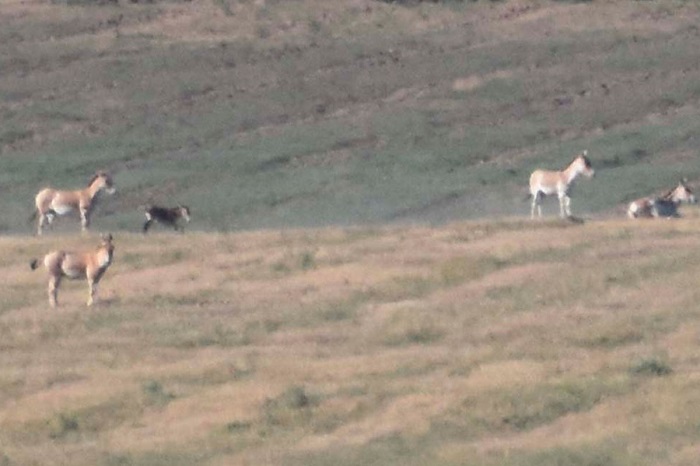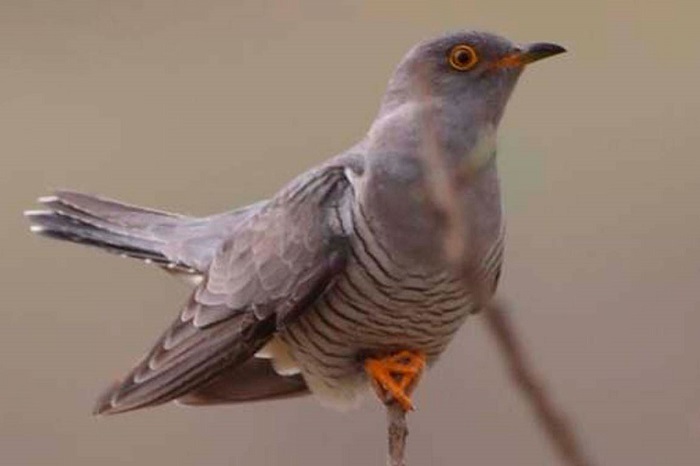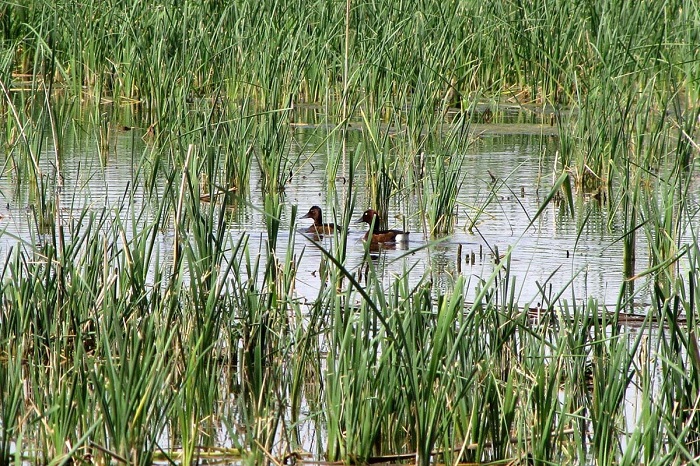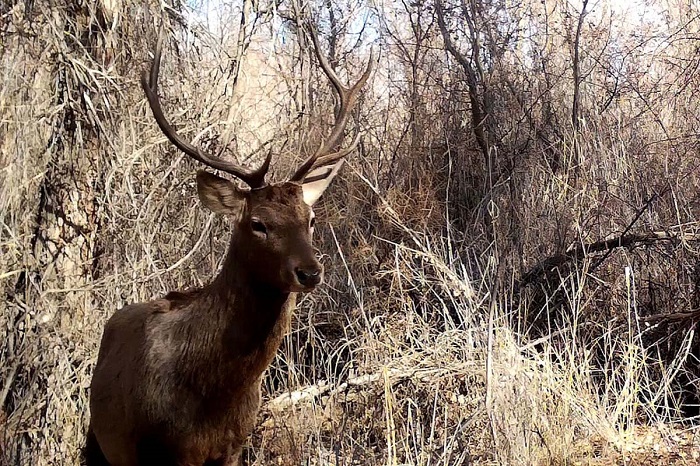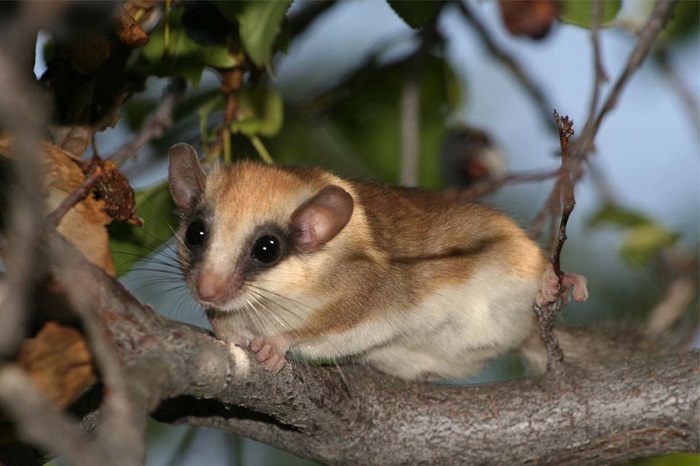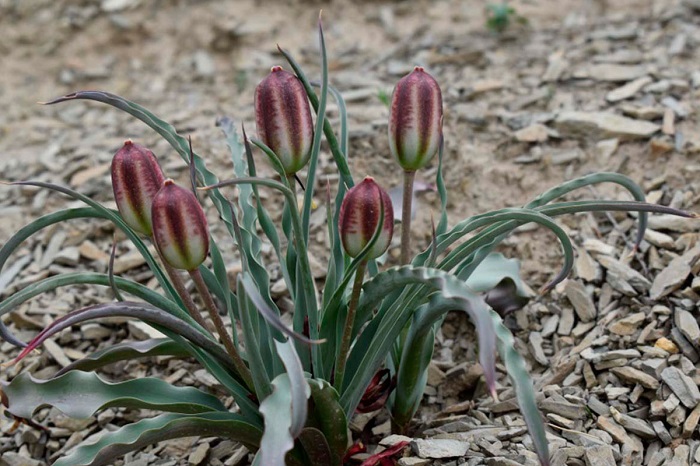Turkmenistan’s National Institute of Deserts, Flora and Fauna received reports on environmental protection activities within the country’s specially protected natural areas for 2023. Details are available in an article by Elena Dolgova published online in the newspaper “Turkmenistan: The Golden Age.” Here are the key findings regarding the state of Turkmenistan’s nature reserves:
Syunt-Khasardag Nature Reserve
- Exciting Discovery: A new population of German medlar (Mespilus germanica), consisting of thirty mature bushes up to forty years old, has been found near Konekesir village within the reserve. This species, previously thought to be extinct in Turkmenistan for nearly 70 years after its former habitat in Chandyr was destroyed by fire, was rediscovered in 2021. The German medlar is now included in the upcoming fourth edition of the Red Book of Turkmenistan, to be released soon.
- Rare Bear Monitoring Continues: Observations of the only known brown bear in Turkmenistan, first spotted in the southwest in 2018, are ongoing. Scientists have determined its activity range covers approximately nine thousand hectares. To ensure its safety, warnings are being issued to tourists, shepherds, residents of mountain villages, particularly teenagers.
Khazar Nature Reserve
- The Turkmen Caspian Sea coast serves as a critical migration corridor for birds across the continent. Researchers are compiling multi-year bird tracking data to analyze migration patterns.
- The reserve counted over 11,000 flamingos throughout 2023, highlighting its significance for these wetland birds.
- Ogurdjaly Island, a part of the Khazar Reserve, provides a safe haven for 514 gazelles. Free from natural predators, the gazelle population flourishes and reproduces successfully.
- The southward migration of seals with their pups continues. These adorable pups are born during the winter on the sea’s northern ice floes.
Repetek Nature Reserve
- The Repetek Biosphere Reserve is included in the UNESCO Natural Heritage List as part of a transnational site
- This reserve is famous for its saxaul tree, exceeding a century old. This is a remarkable feat considering their typical lifespan is around seventy years.
- Deep within the desert, scientists stumbled upon a fascinating discovery – a sandy acacia with mutated flowers. Unlike the usual purple or blue blooms of this plant (known as syuzen in Turkmen), this particular acacia sported vibrant yellow flowers. Such mutations are incredibly rare in nature, as wild species are finely tuned by evolution and resistant to hybridization.
Amudarya Nature Reserve
- The Amudarya Nature Reserve is actively expanding its protected area. Last year, the reserve planted over 14,000 trees, primarily saxaul, around the reserve and in nurseries.
- A camera trap captured an elusive caracal, a wild cat resembling a lynx, also known as the “steppe lynx.” Winter ornithological surveys revealed a bird community. Over 150 flamingos, 500 gray cranes, and impressive numbers of tugai deer (around 150) and gazelles (up to 100) were recorded along the river and its channels.
- Two pairs of deer and gazelles are expected to welcome new offspring by May, contributing to the reserve’s conservation efforts.
Koytendag Nature Reserve
- The earlier study of karst caves in cooperation with the French Federation of Speleology is planned to continue.
- This reserve was the first to introduce a smart system for inspecting the territory. This is a virtual map that shows the meeting places with an animal, the growth of rare plants. The app also saves the inspectors’ routes, time spent on the road, time spent on surveillance, and so on.
- The territory is a home for a population of honeysuckle at an altitude of 2,700 meters above sea level, some specimens reach four meters tall our meters tall with trunks exceeding a meter in circumference.
- The list of higher plants has increased from 998 species to 1003.
Kaplankyr Nature Reserve
- Eight camera traps successfully documented a steppe cat and a gazelle within the reserve.
- Recent hydrometeorological observations indicate declining air humidity and precipitation.
- Three new bird species were documented in Kaplankyr: the cheglok (a bird of prey), the wetland crake, and the rock bunting.
Badkhyz Nature Reserve
- Camera traps have recorded a hyena, a leopard with three kittens at once.
- Family group of kulans with a cub observed.
***
In total, there are nine nature reserves in Turkmenistan with the oldest being the Repetek Biosphere Reserve, established in 1927, the Khazar (1932) and Badkhyz (1941), the youngest is “Bereketli Garagum” (“Blessed Karakums”), established in 2013. ///nCa, 4 April 2024

